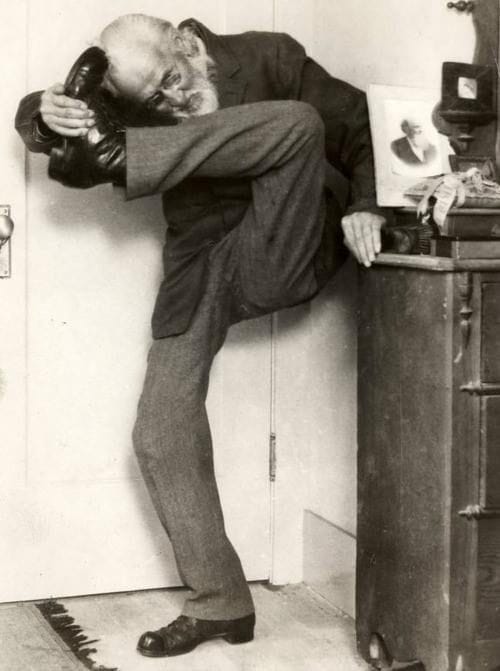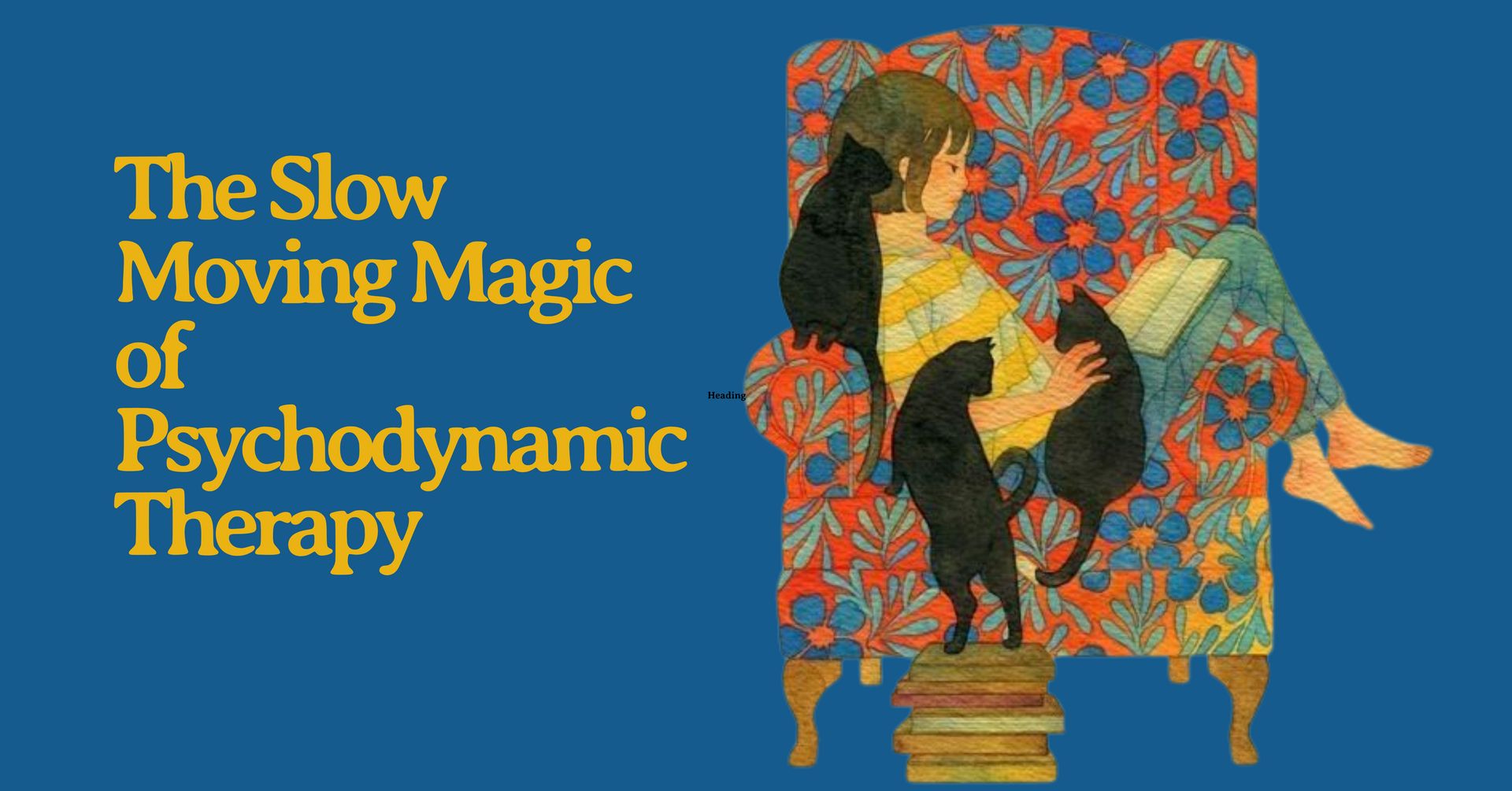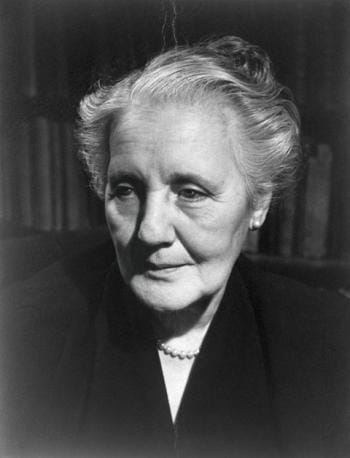You’re reading How to Live—an inquiry into the psychological forces that shape us, and how to stop being run by them.
Through deep research, personal storytelling, and hard-won insight, I challenge the myth of normalcy and offer new ways to face old struggles.
This work is reader-supported. If it speaks to you, consider a paid subscription for deeper insight, off-the-record writing, and seasonal in-person gatherings.
You can also donate any amount.
The Slow-Moving Magic of Psychodynamic Therapy
A few months ago, an Instagram influencer with a following of 248,000 denigrated "traditional therapy" in a reel she posted, saying it failed her in dealing with trauma. And if it failed her, she implied, then it doesn’t work.
She scoffed at the absence of a formal "end date," saying that without one, people remain stuck. However, if you bought her 10-week therapy package (which includes Chakra work) for $899, you'd be "cleared."
I find it troubling that someone with such a huge following would urge others to dismiss traditional therapy because it didn't work for her, while selling something "better."
While talk therapy alone isn't always enough for stuck trauma, and adjunctive therapies can be extremely effective, this influencer represents the worst of online personality culture, who make their money peddling quick fixes in short time frames, unethically steering people away from solutions that might help them.
As my one-year anniversary without therapy approaches, I thought I’d write about the slow, hard work of the branch of therapy I was in. While not a panacea, it worked well for me (I also added trauma-specific therapies like EMDR and Somatic Experiencing) and should not be discounted as an effective model.
So, let’s go inside the psyche…
Talk Therapy
In an era obsessed with the illusion of quick fixes and surface-level solutions, traditional talk therapy stands defiant - an obstinate rebuke to the modern craving for instant results.
Talk therapy scorns easy bromides, elides superficial buzzwords and pithy taglines claiming to transform your inner pain into permanent joy.
Instead, it invites us on a guided tour inside the uncharted depths of our unconscious mind, our psyche, a headlong plunge into the hidden roots from which human suffering springs.
While trendier therapies and pop psychologies peddle gimmicky and often fleeting behavioral hacks, the talk therapy approach embraces the languid, the ambiguous, the essentially inscrutable nature of the human mind and psyche.
Talk therapy mirrors the slow, uncertain, uncomfortable reality of life.
Psychodynamic Therapy
Traditional therapy traces its genesis to Viennese neurologist Sigmund Freud, who catalyzed a seismic shift in understanding human nature, daring to map the unseen territories of the self.
Freud’s revolutionary idea was the existence of the unconscious—a vast, subterranean repository of repressed emotions, primal urges, and primitive fantasies.

Freud (no attribution found)
The polished veneer of society, and the manicured, rational ego, was exposed suddenly, as a superficial container inside which lived a roiling psychic maelstrom.
Through methods like free association and dream analysis, Freud unveiled how these buried forces shape our behaviors, neurotic symptoms, and existential anxieties.
Freud's insights were the inaugural foray into untrammeled territories of the soul. The father of Psychoanalysis, his treatment was an intensive, open-ended process of exploring the unconscious mind and working through repressed conflicts and trauma.
His successors built on his ideas and adapted them, and the synthesized insights from these various branches formed the core of Psychodynamic Therapy (PDT).
A Sampling of Branches That Make Up Psychodynamic Therapy:
Interpersonal Dynamics and the significance of social environments: Karen Horney and Harry Stack Sullivan
The Collective Unconscious, Archetypes and Analytical Psychology: Carl Jung.
The Quest for Superiority: Alfred Adler
BENEATH
At the core of PDT is the belief that beneath our daily roles and coping mechanisms lies a complex interior world shaped by our earliest experiences.
It seeks to uncover and reinterpret this hidden psychological terrain, fostering growth and healing.
Unlike present-focused therapies, PDT practitioners embark on an archaeological dig through the layers of the self, using tools and techniques.
A focal point is tracing back to the origin point, the roots of rupture.
A SAMPLING OF PSYCHODYNAMIC TECHNIQUES
Free association: The client is instructed to relax and say whatever comes to mind without censoring, in order to access unconscious material.
Resistance Analysis: Exploring the client’s unconscious resistance to examining painful thoughts, feelings or aspects of themselves,
Containment: Providing a safe holding environment for the client's raw emotions and psychic contents.
Interpretation: Offering possible meanings and connections between the client's thoughts, behaviors, and unconscious motivations/conflicts
Clarification: Having the client elaborate on their communications in order to address gaps, ambiguities or avoidances
Empathic Listening: Deeply attuning to the client's subjective experience through active listening creates safety for unconscious exploration)
Working Through: Encouraging the client to experience and process unconscious material rather than just intellectualizing it
The overall aim of psychodynamic therapy is to make the unconscious conscious.
Despite its underrepresentation in the modern psychotherapeutic landscape, and some criticism, psychodynamic therapy’s influence is far-reaching.
In an era dominated by brief, manualized treatments and solution-oriented reliance on big pharma, the deep, insight-oriented practice of psychodynamic therapy offers a counterpoint.
Its principles resonate in the work of humanistic, existential, and relational therapists, and even cognitive-behavioral approaches have incorporated psychodynamic ideas.
PDT endures because it resonates with our deeper longings. In a world marked by rootlessness and alienation, it offers a way to reconstruct a cohesive narrative of selfhood.
The therapist's role as a container and interpreter of the psyche provides a reprieve from the distractions of modern life, inviting clients to embrace life's contradictions and strive for authenticity.
As we navigate a new world filled with A.I, fascism, and feel the deepening grooves of social isolation, the need to connect, not only with others, but ourselves, increases.
The psychodynamic tradition, with its emphasis on the unconscious and the complexity of human experience, challenges the reductionist and deterministic views that dominate our era.
Those who dedicate themselves to this field either as a client or practitioner embrace a life wading into the unknown, guided by the profound and enduring mysteries of the human soul.
Like ancient visionaries, psychodynamic practitioners continually explore the infinite depths of the psyche, driven by an eternal quest to understand the unseen forces that shape our lives.
Have you tried Psychodynamic Therapy? Did you have success? Let me know in the comments.
Until next week I will remain…

Amanda
P.S. Thank you for reading! This newsletter is my passion and livelihood; it thrives because of readers like you. If you've found solace, wisdom or insight here, please consider upgrading, and if you think a friend or family member could benefit, please feel free to share. Every bit helps, and I’m deeply grateful for your support. 💙
Quick note: Nope, I’m not a therapist—just someone who spent 25 years with undiagnosed panic disorder and 23 years in therapy. How to Live distills what I’ve learned through lived experience, therapy, and obsessive research—so you can skip the unnecessary suffering and better understand yourself.
Some links are affiliate links, meaning I earn a small commission at no extra cost to you. Every bit goes straight back into supporting this newsletter. Thank you!





 Upgrade
Upgrade